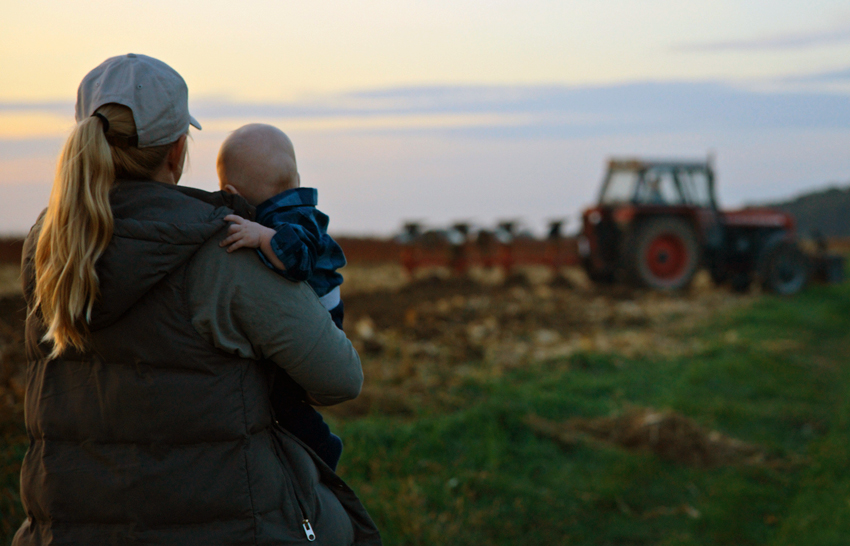

Americans take pride in our diverse deserts, forests, and grasslands. Millions of visitors explore national parks every year to enjoy the serene quiet and awe-inspiring sights. It is no wonder that about 20% of the US population builds their lives and communities in rural areas.1 While rural landscapes are rich in beauty, there are significant challenges to transportation and timely access to healthcare for those living in rural America. Maternal care deserts are counties in which there are no maternal care services, obstetric hospital units or birth centers, or obstetric care providers.2 Almost 7 million women of childbearing age live in maternal care deserts.2
More than half of rural hospitals no longer provide childbirth services, even though it is the most frequent reason for hospital admission in the US.3 Overwhelming challenges have forced 267 obstetrics and labor units in rural hospitals across the US to close from 2011 to 2021.4 The problem is worsening at an alarming rate. In California alone, 16 more maternity wards closed from 2020 to 2022.5 Rural hospital maternity ward closures lead to more babies born outside of the hospital setting and more preterm births. Rural pregnant people face increased risks of severe morbidity and nearly double the risk of death for pregnancy related causes compared to their urban counterparts.6 The impact on rural Black mothers and infants is even worse, creating the greatest disparity between Black mothers and infants living in rural areas and White mothers and babies in urban locations.7 Disparities also affect American Indian and Alaska Native women, who represent a notable portion of the rural pregnant population and are twice as likely to die from pregnancy-related causes as White women.3,8
A new legislative proposal, the Keep Obstetrics Local Act (KOLA), written by the Senate Finance Committee Chair Ron Wyden, aims to stop the closures of obstetrics and delivery units in rural communities.4 The bill would increase Medicaid payments for births at eligible rural hospitals and high-need urban hospitals. It includes “standby” payments to cover staffing needs and maintenance costs for low volume obstetrics units to stay open. The proposal also plans to increase accessibility to emergency obstetrical providers and extend Medicaid coverage to 12 months postpartum for all states. Additionally, it introduces innovative strategies to address multiple barriers that hospitals and patients face in rural communities. Recognizing the costs and risks for pregnant individuals in rural communities is an important step toward improving maternal and infant health outcomes. System changes, such as those proposed in KOLA, can lead to safer births for pregnant patients and their babies. These babies are our nation’s future leaders and national treasures.
For example, Lisa Hollier was a young girl raised in the rural mining town of Trona, California. The hospital in Trona where Lisa was born was closed by 1968. When her mother was ready to give birth again, she had to make a 30-minute journey across the desert to the nearest hospital, a small one, to receive care. This trip was necessary whenever anyone in the community needed medical attention. One day, an unfortunate slip of a kitchen knife sent Lisa's mother and her young daughters on a fear-filled trip down that same quiet road. With searing pain and her hand wrapped in a bloody kitchen towel, Lisa's mother sped along, hoping to reach a doctor in time. Despite the dire circumstances, she juggled her responsibilities, as mothers do, fighting to save her own life while keeping her children safe.
This memory was emblazoned in Lisa's mind. She grew up to become a national leader in obstetrics and gynecology. Dr. Lisa Hollier went on to serve as the president of the American College of Obstetricians and Gynecologists and now holds a role as Senior Medical Advisor on the Maternal Mortality Prevention Team at the Centers for Disease Control and Prevention. The small hospital where Dr. Hollier’ younger sister was born closed its obstetrical care services on March 1, 2024. The nearest hospital for childbirth is now nearly a three-hour drive from her childhood home. For American rural communities to thrive, action must be taken to preserve our nation’s most valuable treasures: its people.
Co-Author Bio:

Juliana Fuller, MSN, FNP-C, RN
is a family nurse practitioner working at SAC Health San Bernardino Women’s Health Clinic specializing in obstetrical and gynecological health care. Recognizing the maternal health crisis has ignited her focus toward the goals of health equity and reproductive justice.
Co-Author Bio:

Lisa R. Roberts, DrPH, MSN, RN
Dr. Roberts is a Professor and the Research Director at the School of Nursing, with a secondary appointment in the Division of Interdisciplinary Studies in the School of Behavioral Health. Her primary research interest concerns maternal health and coping with perinatal grief. Her research interests also include mixed methods and community-based self-help interventions, addressing issues impacting health disparities and vulnerable populations. Her clinical focus as a Family Nurse Practitioner is prevention and primary care.
References:
- https://www.census.gov/programs-surveys/geography/guidance/geo-areas/urban-rural/2020-ua-facts.html
- March of Dimes. (2022). Nowhere to Go: Maternity Care Deserts Across The U.S. 2022 Report. https://www.marchofdimes.org/sites/default/files/2022-10/2022_Maternity_Care_Report.pdf
- Anderson, B. A. & Roberts, L. R. (Eds.) 2019. The maternal health crisis in America: Nursing implications for advocacy and practice. Springer Publishing Company.
- https://www.finance.senate.gov/imo/media/doc/061724_keeping_obstetrics_local_one-pager_and_section-by-section.pdf
- https://calmatters.org/health/2023/11/california-hospitals-close-maternity-wards/
- https://www.ruralhealthinfo.org/topics/maternal-health#:~:text=According%20to%20the%20Pregnancy%20Mortality,per%20100%2C000%20in%20micropolitan%20areas
- McGregor, A. J., Hung, P., Garman, D., Amutah-Onukagha, N., & Cooper, J. A. (2021). Obstetrical unit closures and racial and ethnic differences in severe maternal morbidity in the state of New Jersey. Am J Obstet Gynecol MFM, 3(6), 100480. https://doi.org/10.1016/j.ajogmf.2021.100480
- https://www.cdc.gov/hearher/aian/disparities.html
